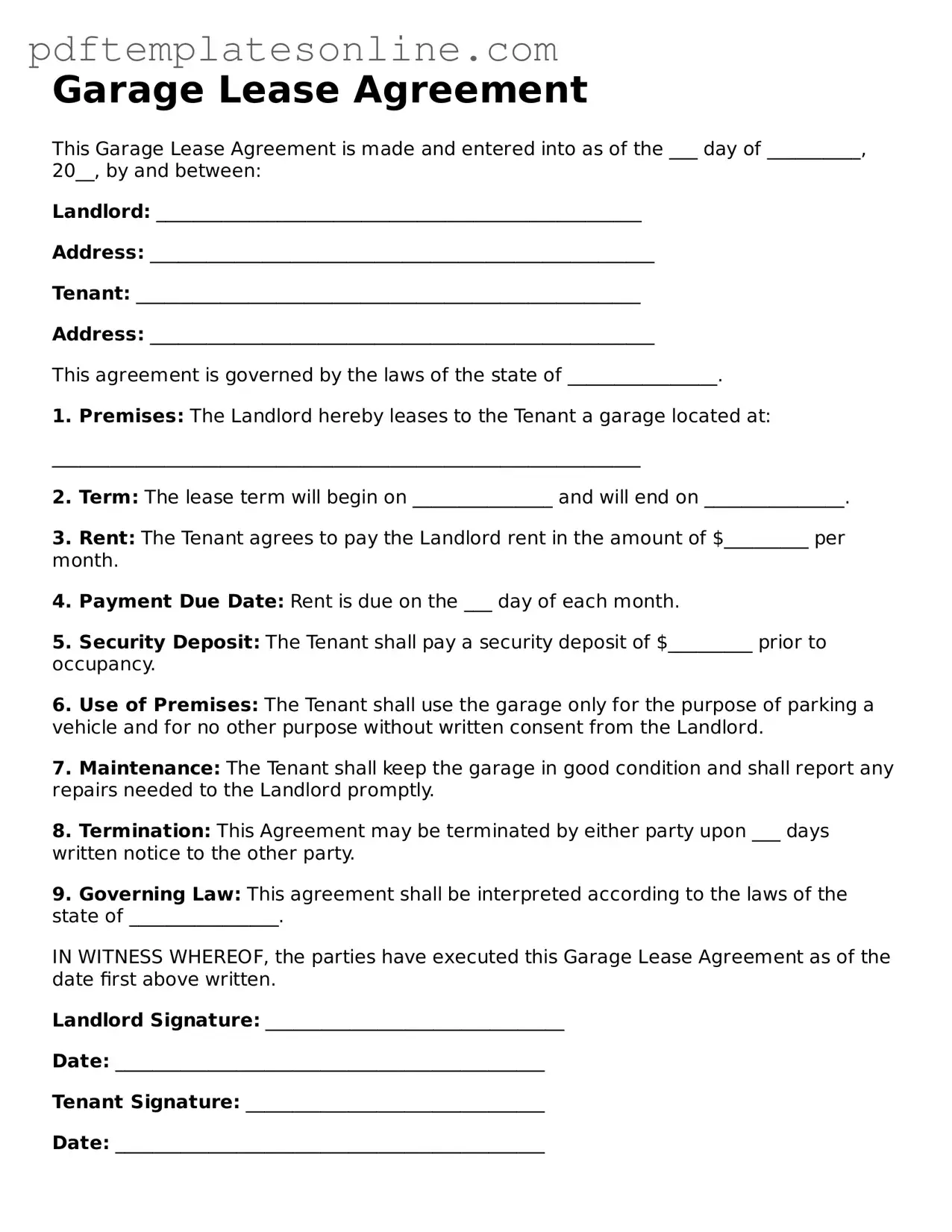Filling out a Garage Lease Agreement form can seem straightforward, but many people make common mistakes that can lead to complications later on. One frequent error is failing to include the correct names of the parties involved. It is essential to list the full legal names of both the landlord and the tenant. If a nickname or an incomplete name is used, it can create confusion and potentially invalidate the agreement.
Another mistake is not specifying the rental term. The lease should clearly state the start and end dates of the rental period. Omitting this information can lead to misunderstandings regarding when the lease begins and when it ends, which may result in disputes over payment and occupancy.
Many individuals also overlook the importance of detailing the rent amount and payment schedule. It is crucial to include the exact rent amount, when it is due, and acceptable payment methods. Without this clarity, tenants may miss payments or landlords may struggle to enforce payment terms.
Some people forget to include provisions for security deposits. A well-drafted lease should specify whether a security deposit is required, the amount, and the conditions under which it will be returned. This helps protect both parties and sets clear expectations.
Another common mistake is neglecting to outline maintenance responsibilities. It is vital to clarify who is responsible for maintenance and repairs of the garage. If this is not addressed, disputes may arise regarding who should handle repairs or maintenance tasks.
Not including a clause about termination of the lease can also lead to issues. Both parties should understand under what circumstances the lease can be terminated early. This can include breaches of the agreement or other specific conditions that allow for termination.
Some individuals fail to review local laws regarding garage leases. Each state may have different regulations that govern rental agreements. Ignoring these laws can result in an unenforceable lease or potential legal issues down the line.
Additionally, people often forget to sign and date the agreement. An unsigned lease may not hold up in court, even if both parties intended to agree to its terms. It is essential to ensure that all parties sign and date the document to make it legally binding.
Finally, a lack of communication between the landlord and tenant can lead to misunderstandings. Both parties should take the time to discuss the terms of the lease before signing. This conversation can help clarify expectations and prevent future disputes.
